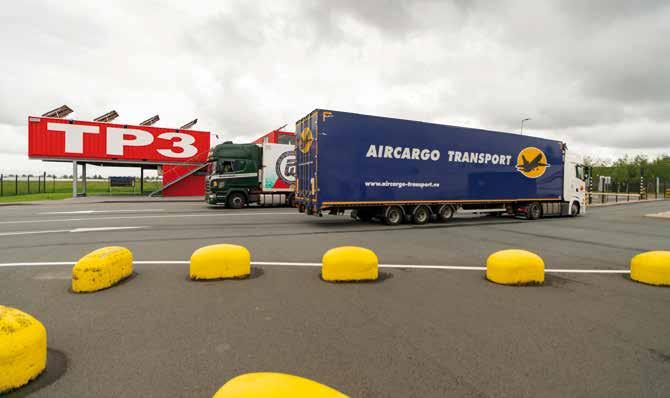
4 minute read
What will the world of air cargo look like in future?
by Cargomedia
Floris de Haan
Advertisement
Sr. researcher air transport economics Erasmus University Rotterdam
As a senior researcher in air transport economics at Erasmus University Rotterdam I am often asked for an answer to this crystal ball question: what will the world of air cargo look like in future. The easy answer to the question is “it depends…”. At the same time developments on both the demand side as well as on the supply side of air cargo become visible and can provide answers. I am happy to provide some considerations and developments in the air cargo industry. If we take a closer look at the influencing factors of air cargo demand, the picture is mixed. Some trends, such as e-commerce, are clearly increasing demand. Others will have a downward effect. Let’s analyse them individually and develop our own vision on the compounded effect.
If we look at the demand side a trend that had started long before COVID hit the retailers, is clearly e-commerce. And increasingly the speed of delivery has become a USP of e-commerce companies. During COVID the closing of physical shops lead to even higher growth numbers, which was beneficial for the integrator companies delivering door-to-door within 24 hours. It is expected that once we have recovered and returned to the old normal, e-commerce is ‘here to stay’ at the levels we are seeing today and higher. This will require air cargo capacity, although in some cases provided by the larger e-commerce companies themselves, such as Prime Air for Amazon.
At the same time consumer behaviour and GDP are closely correlated. Which
means that if our disposable income decreases, we will buy less goods. And with all the state aid that commercial businesses have received during the pandemic, it will be interesting to see how disposable income will develop. Certain staff, such as in the hospitality industry, have suffered big time, while other employees have been able to save and keep on spending. So, depending on payback periods for state loans, and depending on how quickly governments want to return to healthy state finance, our disposable income will be affected. In the end societies will need to pay for state deficits that have increased as result of lock downs, which is directly connected to our disposable income.
Another clear trend that is going on for some longer is the restructuring of global supply chains. We know for decades that having trade agreements between countries has a positive effect
on trade and hence the demand for air cargo. For a number of reasons, we have seen production moving closer to the consumer in North America and Europe. Rising cost of production in Asia, better quality control or protecting employment, as we have seen in the US, are amongst the reasons for this restructuring. On top of that, COVID has also taught us that just in time supply chains are vulnerable in case transport capacity all of a sudden, falls away. And specifically, when it concerns, personal protection equipment (PPE), medical devices or pharma, this has caused headaches for companies dependent on their global supply chain capacity providers. We now see companies that hold larger stocks in what is called a buffer economy. And more stock requires less speedy supply. A negative effect for air cargo, although this change is not happening overnight and significant parts of production will remain off shore.
On the supply side the air cargo industry has seen an increase in available belly capacity up to 2019. New aircraft were added to the intercontinental passenger fleet and typically aircraft such as the Boeing 787 Dreamliner and Airbus A350 XWB have excellent belly capacity for cargo. Although certain markets still require full freighter capacity on top of belly capacity, the increase in capacity has put pressure on prices. Again, not all markets have seen that increase to the same extend, so regional differences are significant (see IATA graph). The recovery of intercontinental passenger traffic will
therefore have an effect on supply of belly capacity and hence the need for additional full freighter capacity and as an ultimate consequence also on prices of air cargo transportation. Looking into more detail there is interesting signs on the horizon when it comes to intercontinental passenger traffic. Leisure traffic is likely to recover faster, while business traffic may see structural demand changes. On one hand the onsite maintenance engineer will remain flying, on the other hand business people in the services industry have learned to deal with online meeting platforms. A reduction of 20% in business travel compared to pre-COVID times will have an effect on the earning power of intercontinental passenger airlines and may even have long term effects and change passenger airline business models.
And looking at airport capacity there is a number of effects that come into play as to which airports will benefit. As mentioned, e-commerce will remain a driving growth factor, so likely airports that host integrator traffic will benefit. At the same time, in general cargo we may see some consolidation of trade flows at airports with the highest volumes. On the other hand, airports with large national carriers are also confronted with new environmental regulation in order to reduce climate footprint and noise nuisance. In the case of Schiphol with even less night flights.
Concluding, it is not easy to forecast what the world will look like in the
foreseeable future. But if consumption remains at reasonable levels and intercontinental belly capacity will show balanced growth, a bright future lies ahead of us with volume growth and healthy price levels.










